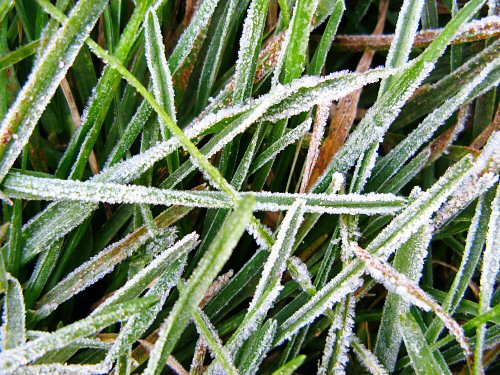 One of the most important ingredients at the disposal of the gardener is well-rotted organic material. This covers a wide range of materials, from farmyard manure and garden compost to spent hop waste and old mushroom compost. Whatever material you have, it should be capable of breaking down into a rich, fibrous substance that will not only help feed plants but also improve the structure of the soil. Most organic materials are rich in nitrogen and usually in other nutrients as well. The fibrous material helps to break up the soil as well as holding a certain amount of moisture. It frequently also has the effect of darkening the soil, which, in turn, helps to warm up the ground more quickly in spring.
One of the most important ingredients at the disposal of the gardener is well-rotted organic material. This covers a wide range of materials, from farmyard manure and garden compost to spent hop waste and old mushroom compost. Whatever material you have, it should be capable of breaking down into a rich, fibrous substance that will not only help feed plants but also improve the structure of the soil. Most organic materials are rich in nitrogen and usually in other nutrients as well. The fibrous material helps to break up the soil as well as holding a certain amount of moisture. It frequently also has the effect of darkening the soil, which, in turn, helps to warm up the ground more quickly in spring.One source of organic material that is available to all gardeners is garden compost. This consists of the remains of all vegetation that is not required. Grass cuttings and the remains of plants are the main source. weeds can also be used as long as they are not in seed and not perennial variteies that will continue growing. In theory, the compost heap should get hot enough to kill both the weed seeds and the perennial weeds, but in practice a lot always escapes and becomes a nuisance on the ground on which compost is used. Non-cooked, vegetative kitchen waste, such as peeling and discarded leaves, are another good source of compost.
Tougher stems and hedge-cutting should be avoided unless you have a shredder. This machine is invaluable if you have a lot of such material because it will chop it up into fine pieces and it can then be composted and returned to the garden as mulch or soil conditioner. It can be either kept in its own bin or mixed with other compost.
Cottage gardeners used to throw everything in heap for a year, but although this works, it is not the most efficient way. A properly constructed compost bin, either purchased or homemade, is ideal. This keeps the compost together, allows air in at the sides and keeps the heat in. Make or buy at least three bins - the first is the one to which you are currently adding material, the second is rotting down, and the third is the one from which you are taking compost to use on the garden.
Material is added to the compost bin as it becomes available, but try not to put too much of one type of material into a thick layer, especially grass cuttings. the process can be speeded up by the addition of a chemical activator, which can be purchased at a garden centre. Alternatively and preferably, you can add a layer of farmyard manure. Add water to the heap if it is dry, but cover it with a sheet of polythene so that the pile does not get too wet. some bins have lids to help keep the heat in. As the compost breaks down it is likely to get very warm - this is a natural part of the composting process and is, in fact, to be encouraged.
There a number of other sources organic material if they can be found. Farmyard manure is one of the best, but it must be well-rotted, because if it is left to decompose in the ground it will extract nitrogen from the soil to aid its progress and thus deplete, rather than supplement the nutrients. Bear in mind that some farmyard manure will contain a lot of weed seeds from the hay that was given to the animals.
Waste from various processes is also useful, but some kins will have involved chemicals, which will still be present in the waste. Hop waste, which is available from breweries, is excellent, as is spent mushroom compost. However, you should be aware that the mushroom compost incorporates horse manure, and to counter the acidity, mushroom growers add chalk - do not use this near lime-hating plants. Waste from the forest industry is becoming widely available in the form of chipped and composted bark. Chipped bark has not broken down far enough to be used in the soil but it makes a good top dressing. Composted leaves are an invaluable material in the garden, but make your own and do not raid the woods.
Alfresia is an online supplier of garden furniture.



